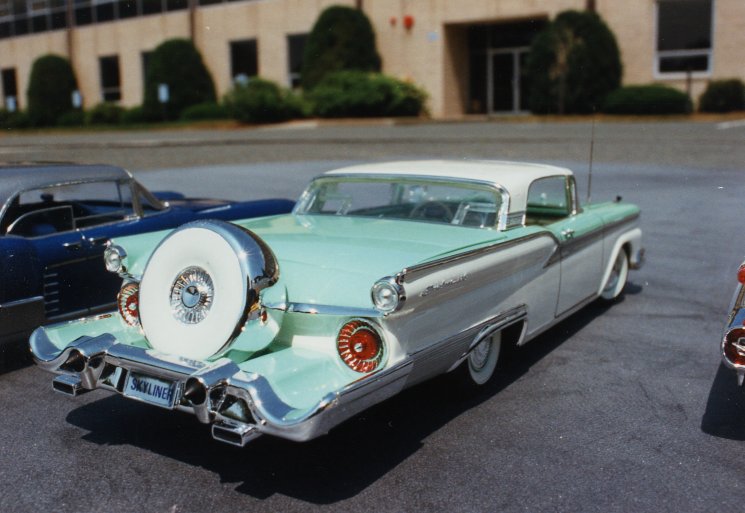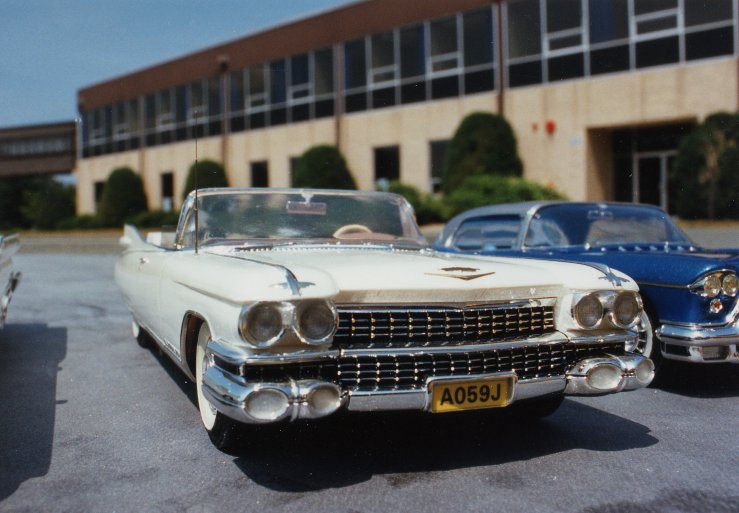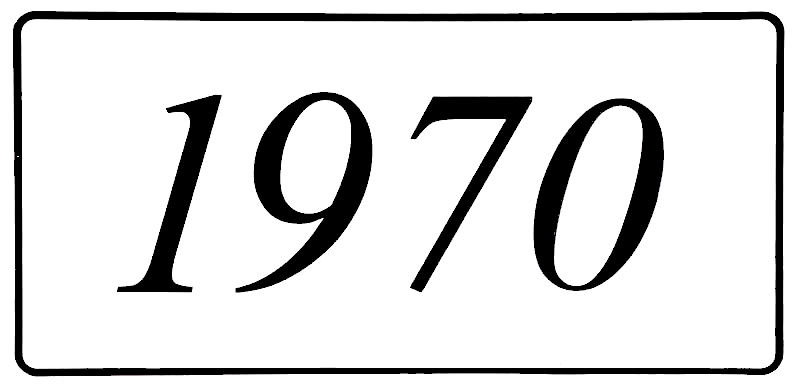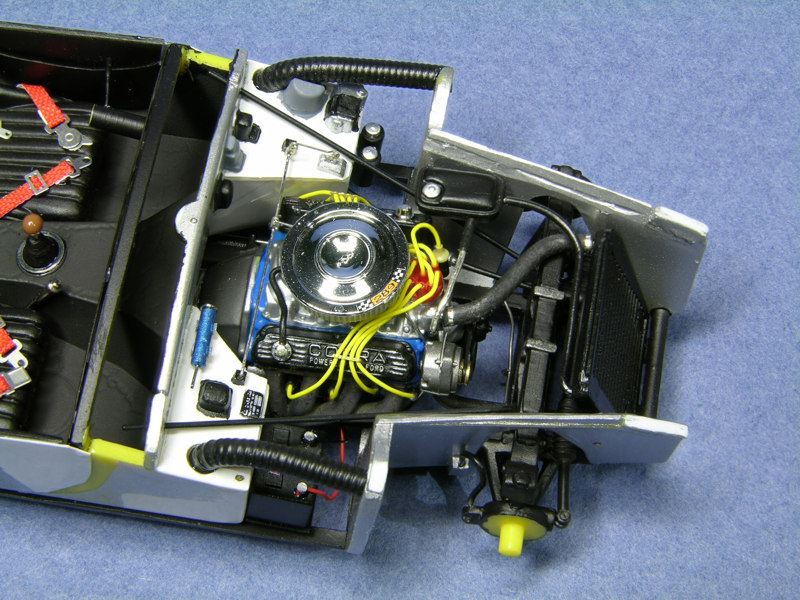-
Posts
8,157 -
Joined
-
Last visited
Content Type
Profiles
Forums
Events
Gallery
Posts posted by peteski
-
-
On 1/31/2018 at 3:52 PM, Modeltruckbuilder said:
As viewed from Canada
Shouldn't that state "Ass viewed from Canada"?

-
Stainless steel hypodermic tubing (as mentioned above) is the answer. The thinnest (top) segment can be made from a stainless steel wire.
There used to be a company in Florida called Small Parts Inc. They had a huge selection of that tubing (and wire). That is where I got bunch of it. That company got absorbed by Amazon and the selection and ease of ordering went down the tubes. But if you Google for hypodermic tubing, you might find some sources.
-
On 2/4/2018 at 11:46 AM, Ron Hamilton said:
I believe that the manufacturers use of certain material compounds in the '60'smodel kits.
I have restored many a 60's model car, and I had to replace the wheel covers and backs with resin pieces, which surpisingly did not melt, nor the Satco tires I used to replace them. Whenever I bought a vintage kit, I wrapped the tires, as I have found tire burn on various parts of the kits, which I have to repair.
I have yet to write about the tire melt on my storage cases. My 1/25 cars are on wooden shelving with no effect, while my 1/18 die cast cars tires have left divots in the bases of the cases I stored them in.
The tires prone to melting plastic are made from vinyl and it is the plasticizer, which makes the vinyl soft that leaches out and softens the plastic it contacts. Satco (and most Japanese kit manufactures like Tamiya, Fujimi, Hasegawa, Aoshima, etc.) make their model tires from "real" rubber. It does not have any plasticizer, so it will not attack plastic. But (just like real rubber tires) those tires will get brittle after years of exposure to ambient air. Still, that is better than what happens with vinyl tires. Then there were theose crappy 2-piece hard-plastic tires. Those didn't look good and were hard to glue, but at least they didn't melt the wheels.
-
My GF had a female Chihuahua that loved to hump her dog toy (furry elephant about half her size). She would mount it, grab its head with her teeth, than keep humping it. It was really funny.
-
3 hours ago, High octane said:
Yeah I'm serious as mine are higher.
Am I missing something? He didn't actually indicate how much property tax he is paying - he just showed the evaluation which shows the value of his house. The actual tax depends on the tax rates of his town.
-
8 hours ago, Greg Myers said:
Just a few at the end, first page shows up for me

There is only one post where I can see the photos: http://www.modelcarsmag.com/forums/topic/6659-scale-wire-wheels/?tab=comments#comment-854756
All the other photos are just Photobucket or imgur icons indicating failure. No photos.
-
Sharpies (or similar permanent markers) can sometimes slightly craze the surface of some types of plastic. Some brands are more aggressive than others. Always test them on a piece of clear tree.
-
Here is a trio of 1:32 Gunze Sangyo models I built years ago. Very nice kits! There are few more in that series - I haven't built those yet.






-
Isn't that plate supposed to be white with black letters? Here is a cleaned up version for you.

-
On 1/25/2018 at 1:27 PM, Greg Myers said:
Lot's of ways to tackle this. Here are just a few

http://www.modelcarsmag.com/forums/topic/6659-scale-wire-wheels/
Unfortunately the photos in the above link are gone (thanks Photobucket)!
-
On 1/26/2018 at 5:33 PM, Toner283 said:
Use a chunk of old panty hose over the end of the suction hose for the vacuum. Just make sure there are no holes in the pantyhose piece. Small parts will get sucked to the end of the vacuum but not get pulled through the nylon. Works great with a central vac or a shop vac.
Yup, that works and is a trick modelers of all sorts have been using for decades.
-
On 1/29/2018 at 2:13 PM, Ben said:
Browsing though this old post and I noticed the glossiness of the wire being an issue. Just fold a piece of fine sand paper around the wire and pull it through it a few times.
That will work on an insulated wire with some sort of plastic insulation on it. But if you did that to the enameled jewelry wire, that will likely remove the colored enamel, exposing the bare wire. I suppose that using DUllcote might work for that type of wire.
-
On 1/25/2018 at 6:15 AM, afx said:
Its a grease gun.

LOL! For those on-the-road lube jobs! I knew that some older cars (from the '20s and '30s) had manual oilers stored in the engine compartment, but I didn't realize that more modern car would carry a grease gun. I'm glad that I modeled it, even without knowing what it was.
-
If you are worried about pain adhesion, once the part is polished, wash it in a warm water and dish detergent. That should clean off any polishing compound residue. Or if you are really paranoid, rinse the part in 91% isopropyl alcohol. Or do both.
 In any case, paint adhesion is usually negatively affected by silicone-based waxes (not polishing compounds)
In any case, paint adhesion is usually negatively affected by silicone-based waxes (not polishing compounds)
-
Best slammer class was at the MassCar contests years ago. You took your model out to the parking lot where there was a ladder and a sledge hammer. You placed the model by the ladder, took the hammer and climbed onot the ladder. They you would drop the sledgehammer trying to hit your model. Once the model was hit, they would measure the distance of the part which flew out the farthest away. The person whose kit's part flew out farthest won the slammer class. Honest!
-
On 1/29/2018 at 11:32 AM, Greg Myers said:
Many still do, Andy's Hobby Headquarters in Glendale AZ and the ACE Hardware in Tucson are great examples. Great stock and people that know and care.

I think more accurate statement (at least for my area) would be "Some still do."
Spare Time Hobbies in Marlboro, MA is chock-full of kits like in that photo. Then there is Hobby Emporium in Tyngsboro, MA. That's about it for the old-fashioned hobby shops. Both within about 30 miles of where I live. I consider myself lucky.
-
Eh, it is all jut a bunch of numbers to me . . .

-
22 hours ago, iamsuperdan said:
In my old 93 XJ, I ran the IPF replacements with their H4 replacement bulbs. Was an amazing upgrade. Huge bang for the buck.
https://www.quadratec.com/products/97017_1600.htm
I ran them with the IPF H4 Magic Bulbs with the green glow ring. Kind of cheesy but I liked them.
LED headlights are a challenge here, as they don't generate enough heat to melt any ice or snow build up while driving.
While not specifically directed at you, I absolutely hate car owners who install all those super bright headlights in their cars.
They are blinding the oncoming drivers (and don't tell me that they are just misadjusted). No, they are just too BLAH_BLAH_BLAH_BLAH bright!! HID projector headlights are also pretty bad when it comes to blinding oncoming drivers (especially if the road is uneven and they shine right into my eyes while they go over a bump on the road). The worse are them new LED headlights. Even factory installed - they are no only extremely bright, the bluish tint makes it even worse. What happened to regulations which used to define the brightness and light pattern of a headlight? Those seem to have gone the way of a DoDo bird! Sure, you in you big SUV, you can see the road much better with those lights, but what about being considerate to the oncoming drivers?
-
Items like mesh don't really have a scale because the 1:1 mesh on a vehicles could have many different dimensions. To make it in-scale, you would have to know the 1:1 mesh dimensions, divide them by the scale of your model, then pick a mesh which has the dimensions close to what you need in scale.
So that hex mesh 0.43 x 0.37mm (used in a 1:24 scale model) would represent a 10.32 x 8.88mm mesh on 1:1 vehicle.
-
5 hours ago, highway said:
Ever hear of the "DO NOT CALL" list?

I have my number on it and never have to worry about annoying sales calls.
You're kidding right?
I have been on that list (and verified that I am still on it) since it was introduced. That does nothing - the unwanted calls still come through (sometimes 3 per day). I used to have my phone number unpublished and unlisted but I stopped paying for that few years back when I Googled my phone number and it showed all my personal info. Nothing is private anymore.
The sales people (and I use that term loosely) that Spam us with calls don't worry about a do not call lists - they just call all the possible combinations of numbers and they also use spoofed caller ID, so even it you report that number, nobody is going to catch the real Spammer. Sometimes the Caller ID of a Spam call shows my own phone number - do I report myself? Plus, most of them are in India or another foreign country.
-
I had to scratchbuild the fluid reservoirs and master cylinders in the Monogram 1:43 289 Cobra. I used styrene rod. This view shows the reservoirs (I don't have any photos of the master cylinders).

While unrelated, this brings another question for the Cobra experts: What is that cylinder mounted on top of the the right foot-well? On my model it is metallic blue. In Bill's photo (few posts earlier) it is black with a gray screw-on cap. Sort of looks like bicycle air pump.
-
If tape (Scotch, or even masking tape) doesn't work you can try softening them with 91% rubbing alcohol, or one of the decal setting solutions, then gently scrape them off. But be careful as those liquids might affect the paint.
-
On 1/23/2018 at 10:08 PM, crowe-t said:
Someone above said 30 ga wire will be too thick for factory stock wires.
Is the 30 ga Kynar wire(with insulation) the correct thickness for factory wires?
What (size)wire is good for boot material?
I mentioned that on the 1st page of this thread. First of all, 30AWG wire is 30AWG wire (the actual wire) and is always 0.010" in diameter. The overall diameter (with insulation) depends on the type and thickness of the insulation. The Kynar-insulated 30AWG wire's overall diameter is about 0.016" which to me is too thick for representing a factory-stock ignition wires in 1:24-25 scale models. But others aren'tas picky as I am. it is your model - do whatever you want.

-
With all those wonderful Internet-connected IoT devices you will also have IoT hackers doing all sorts of things to your precious thermostats, refrigerators, washing machines and toilets. Like turning on the cold-water bidet function when you least expected. All I know is that with all all these gadgets around us, we are in for one fun ride in the near future.
I also get a kick of that find-my-phone app. When you lose your schmart-device, where do you run your app? In your head?
 You need another computing device with the access to the app.
You need another computing device with the access to the app.











1910 Thomas
in Model Cars
Posted
Wow! Harry's early model - how cool is that? That is a treasure.
I'm also impressed that it survived shipping (assuming that it was not picked up in-person) relatively intact.